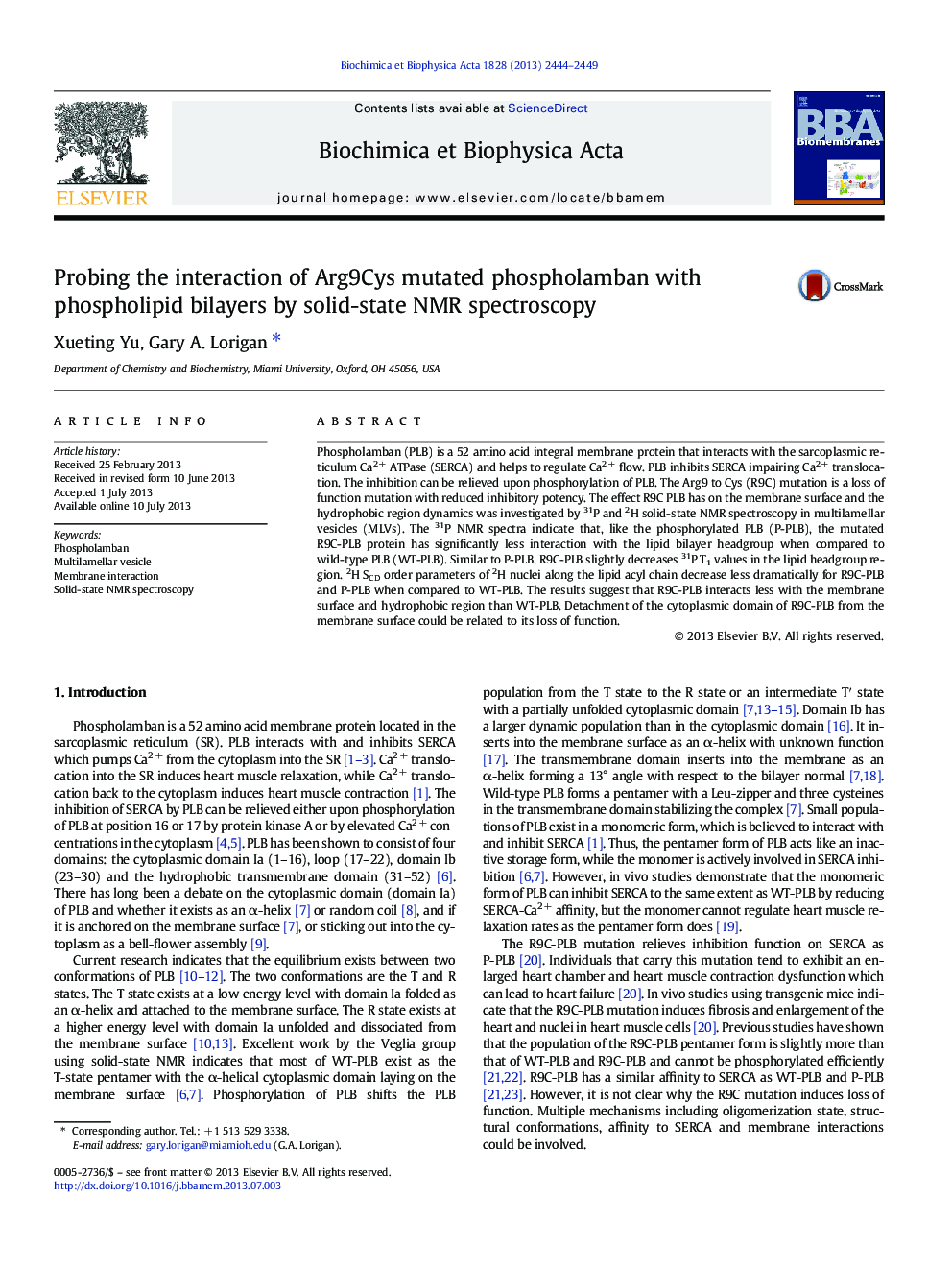| Article ID | Journal | Published Year | Pages | File Type |
|---|---|---|---|---|
| 1944289 | Biochimica et Biophysica Acta (BBA) - Biomembranes | 2013 | 6 Pages |
•Phospholamban was incorporated into lipid bilayers and studied by solid-state NMR spectroscopy.•WT-PLB dramatically perturbs the membrane surface and the hydrophobic regions of the bilayer.•R9C-PLB and P-PLB have similar moderate effects on the membrane surface and hydrophobic region.•The R9C-PLB cytoplasmic domain associates less tightly with the membrane surface than WT-PLB.
Phospholamban (PLB) is a 52 amino acid integral membrane protein that interacts with the sarcoplasmic reticulum Ca2 + ATPase (SERCA) and helps to regulate Ca2 + flow. PLB inhibits SERCA impairing Ca2 + translocation. The inhibition can be relieved upon phosphorylation of PLB. The Arg9 to Cys (R9C) mutation is a loss of function mutation with reduced inhibitory potency. The effect R9C PLB has on the membrane surface and the hydrophobic region dynamics was investigated by 31P and 2H solid-state NMR spectroscopy in multilamellar vesicles (MLVs). The 31P NMR spectra indicate that, like the phosphorylated PLB (P-PLB), the mutated R9C-PLB protein has significantly less interaction with the lipid bilayer headgroup when compared to wild-type PLB (WT-PLB). Similar to P-PLB, R9C-PLB slightly decreases 31P T1 values in the lipid headgroup region. 2H SCD order parameters of 2H nuclei along the lipid acyl chain decrease less dramatically for R9C-PLB and P-PLB when compared to WT-PLB. The results suggest that R9C-PLB interacts less with the membrane surface and hydrophobic region than WT-PLB. Detachment of the cytoplasmic domain of R9C-PLB from the membrane surface could be related to its loss of function.
Graphical abstractFigure optionsDownload full-size imageDownload high-quality image (126 K)Download as PowerPoint slide
